You can take a good photo on a phone now. If you’ve got the eye, it doesn’t matter what the instrument is,” says Mick Rock. “I’ve seen pictures that my wife has taken and said ‘wow, I really love that. If I’d taken it it would be worth a lot more money!’”
Mick Rock has a good laugh at his joke. He’s not one to take himself too seriously. “It’s just that brand matters doesn’t it?” he says. “’Mick Rock — the Marks & Spencer of rock ‘n’ roll’. It’s not fair, but it’s always been like that. For one reason or another, one person gets some kind of attention, the recognition, and others don’t. Or they have the association — if I’d have only ever just been plain Mick Rock it wouldn’t have worked. If I’d have been born more recently, it wouldn’t have worked. I’d just be ‘that bloke Mick Rock who hangs out down the barrio sometimes’. But all these characters kept tumbling in front of my lens. And then you end up becoming some kind of character yourself.”
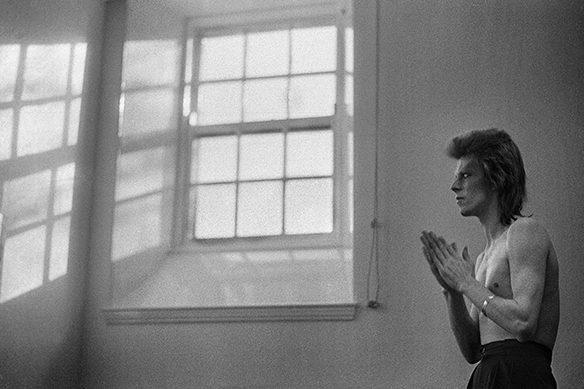
David Bowie in Scotland, 1973 © Mick Rock 2021
Mick Rock, now 73, is certainly that. With his outsized sunglasses and mane of hair — “I just rinse it out every day,” he says, “but I don’t think it would all have worked out if I’d have been bald” — he looks more like one of the rockers in front of his lens than the man stood behind it. Maybe that worked in his favour — affording him an intimacy with the likes of Bryan Ferry, Syd Barrett, John Lydon, Lou Reed (for whom he shot the iconic cover of the ‘Transformer’ album) and David Bowie, who he shot ‘Pinups’, and whose videos Life on Mars’ and ‘Space Oddity’ he directed. That image of Queen on the cover of ‘Queen II’, the one that would become the ‘Bohemian Rhapsody’ video? He shot that too.
"I don't think things would have worked out if I'd have been bald..."
Small wonder, then, that he’s been dubbed ‘the man who shot the 70s’. “Yeah, some clever geezer came up with that and I didn’t like it at first, but it stuck,” he chuckles, although he hasn’t stopped working since. Mick has shot Snoop Dogg and Daft Punk, and the cover of Miley Cyrus’s latest album. He shoots kabuki theatre and has shot erotica, but “not porn because I don’t do pornography,” he stresses. “I have a daughter and don’t want her thinking her father is a dirty old man”.
He’s just collaborated with the street artist Fin DAC on a series of Warhol-esque versions of his photos of Debbie Harry and Iggy Pop, among others, and has launched a series of prints of some previously unseen shots. But by his own admission, the 70s have proven something of a cash cow for him.
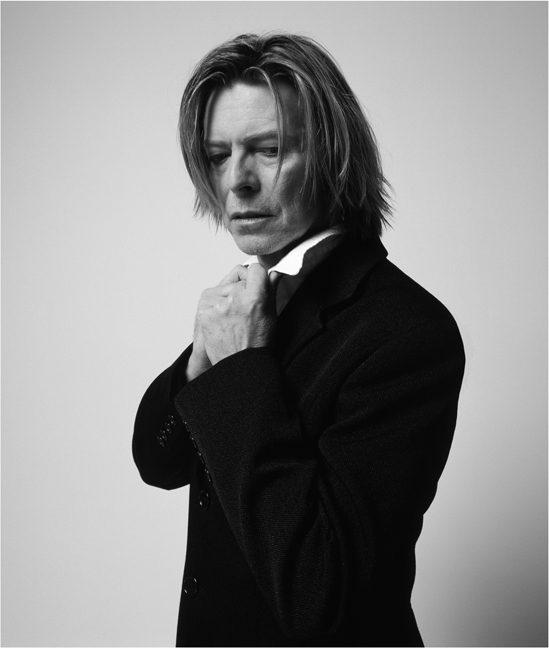
David Bowie shot in New York City, 2002 © Mick Rock 2021

Jonny Rotten, shot in London © Mick Rock 2021
“It amazes me how in demand images from that period are, how fertile it is,” says Rock, who’s been wise in retaining his copyright. “Whatever the photos from that era were, they weren’t considered as art. But they are now. I’m lucky to have my ‘Mona Lisa’. In fact I have three of four ‘Mona Lisas’. And I’ve been offered millions for my archive. Why not cash in and do a Bob Dylan? Well if it was worth that much I might be tempted. But of course I shot other stuff because I had to make a living — though I wasn’t in [photography] for the money, because there wasn’t much then.”
That’s something that never seemed to bother Rock — and, yes, Michael ‘Mick’ Rock is his real name, no matter how conveniently it may be, and no matter how much Lou Reed would rib him with the suggestion that he’d made it up. Having graduated from Cambridge, where he studied languages and literature, Rock had already developed a self-image founded on his love of the rebellious romantic and symbolist poets — Baudelaire, Verlaine, Coleridge, Byron; “that whole ‘Oh yes, I did a masterpiece this afternoon after about eight tons of opium’” crowd, he says. Mick was pretty sure he was never going to get what his disappointed mother would call “a proper job”.
"I’ve been offered millions for my archive. Why not cash in and do a Bob Dylan?"
In the late 1960s, Mick started writing about the music scene, interviewing the rising talent, and would sometimes be asked to take some photos while he was there, “because it saved the magazines a few bob”. It was the photography that stuck, and this at a time when, as he puts it, being a photographer was a rather lowly profession.
“I didn’t set out to become a photographer. I just pointed a camera and talked, and that worked,” says Rock, who was born in London but has lived the past few decades in New York. “It does help if you can develop friendships with your subjects. And these relationships were privileged. So don’t expect a biography from me anytime — I don’t want all the bother from the likes of Lou in the afterlife. But I thought of myself more as a kind of [photographic] hit man, always relating to the action.
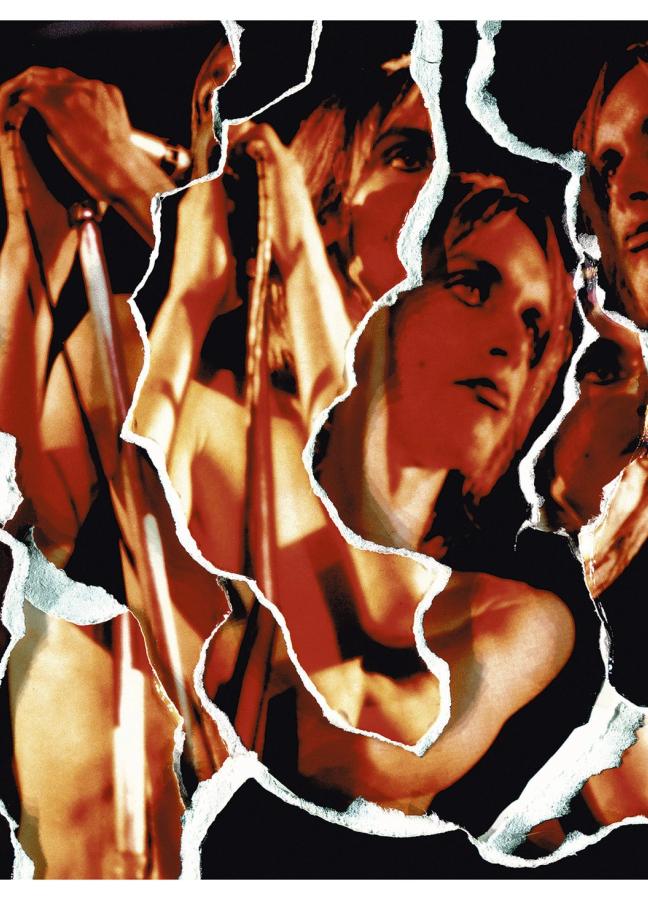
One of Mick Rock’s new pop art-inspired prints © Mick Rock 2021
“Stanislavski, the godfather of method acting, would talk about going into the raw space and building ‘the circle of concentration’,” Rock adds. “And it seems like that worked in photography too. I was good at containing [the energy], and after that the pictures would almost take themselves.”
Rock, like his subjects, took a lot of drugs. Cocaine, LSD, anything, he says, “that would jump me up a little bit”. But, just as Eastern philosophies were finding their place in the artistic west, he combined this hedonism with yoga, breath retention and other mind-altering methods, from not sleeping much to not eating much.
“Those altered states definitely helped me develop my eye,” says Rock. “Yes, it was a lot about the drugs, but not just about the drugs, so much as the wider culture — probably that era would not have been what it was without [the mind-bending drugs and practices]. And then I nearly died. Quadruple heart bypass surgery. Kidney failure. Well, that seemed to change things for me. It was a tap on the shoulder.”

© Mick Rock 2021

© Mick Rock 2021

© Mick Rock 2021
Unlike many of his subjects, Mick Rock is a survivor, still creating, still pressing the shutter button, still with projects on the go — not least ‘Shot!’, a compendium of his best work due to be published later this year. “My grandma always used to call me a fidget-arse. ‘You won’t sit still Michael’,” he laughs. “So the thing about photography is that it’s perfect for a fidget-arse because you’re always on the move. That said, I did do a bunch of still lives at one point. Someone once pointed out that if I wasn’t so into drugs I wouldn’t have been remotely interested in carrots and eggs and whatever else I shot. Well, you have to roll with it. You have to have a sense of humour about it.”
Mick Rock’s new limited-edition series of archive shots, and of four previously unseen images, as well as the works by Fin DAC, are all available from west-contemporary-editions.com.
Mick Rock on his most iconic shots
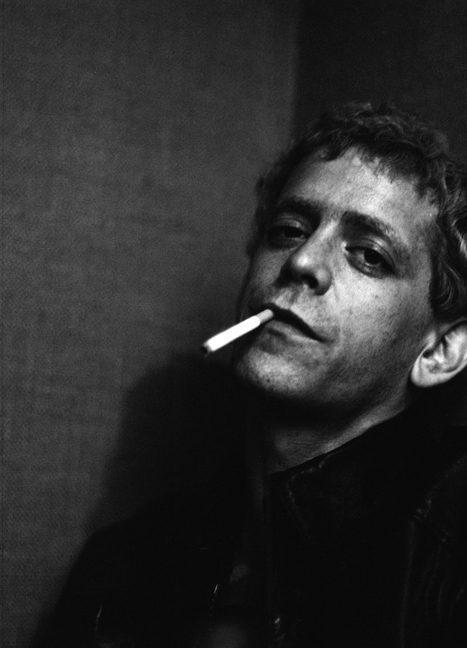
© Mick Rock 2021
LOU REED WITH CIGARETTE
“This picture is actually slightly underexposed and we had to push process it [a technique that increases the effective sensitivity of the film], which gave the image that grain. It’s taken during Lou’s blonde period. He used to not sleep very much during those days and you can kind of tell. He has that wasted poet look about him. He was a complex person. It was partly an act. He could be shy, as well as caustic.
“But also kind and sweet — you know, if you were his friend. He loved little dogs. He had two dachshunds which I took some pictures of. I told him that with those I could wreck his image. He also had a thing about my cat Fang. When we spoke the first question would be ‘how’s Fang?’ Getting to know Lou was part of a magical time. [Back then] Lou and Iggy couldn’t give their records away but then you look back at songs like ‘I’ll Be Your Mirror’, a love song, and I think there’s none better. Lou wrote for Nico [60s singer and muse] to sing to him. I love that.”

© Mick Rock 2021
DEBBIE HARRY
“It wasn’t until I moved to New York that I started to shoot the women — Debbie Harry, Carly Simon, Joan Jett. If you’re with a bunch of boys, well, it would always get a bit loud. That was the latent yob in me. So shooting women was always a bit different. [But then] someone like Debbie was just so enormously photogenic anyway – David [Bowie] and Debbie, those were the two that you couldn’t really take a bad picture of. I always thought of Debbie as the Marilyn Monroe of rock ‘n roll — not of punk, which she was associated with. She was bigger than punk.”
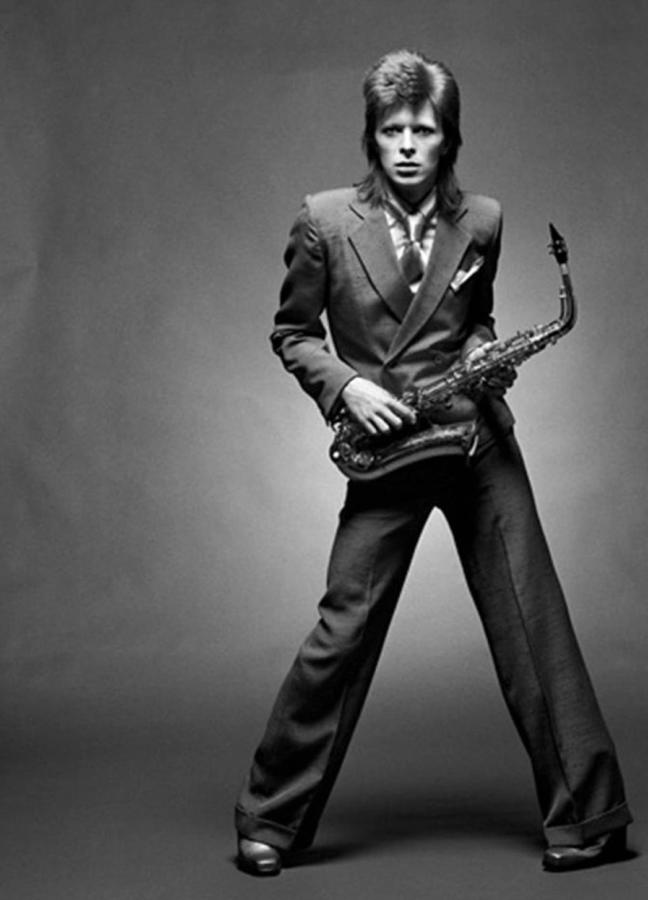
© Mick Rock 2021
DAVID BOWIE WITH SAXOPHONE
“I’ll find you a story about this one, but whether it’s a true story I’m not telling. Well, I was the art director of the ‘Pinups’ album which in the end was shot with Twiggy and [glam rock make-up artist] Pierre La Roche, who also did Bowie’s ‘Aladdin Sane’ look and also the make-up on my ‘Life on Mars’ video. I worked with some amazing people during that period.
“So this is one of the sessions we did for that album, a picture that ended up on a paper insert sleeve, which a lot of [bands] did [for their vinyl albums] at the time. It didn’t take that long. We shot in a studio — and in fact it was the only session I did with David in a studio. I wasn’t that experienced [with studio work] but five months later I had my own studio near Leicester Square, which is where I shot that Queen cover [for ‘Queen II’].”
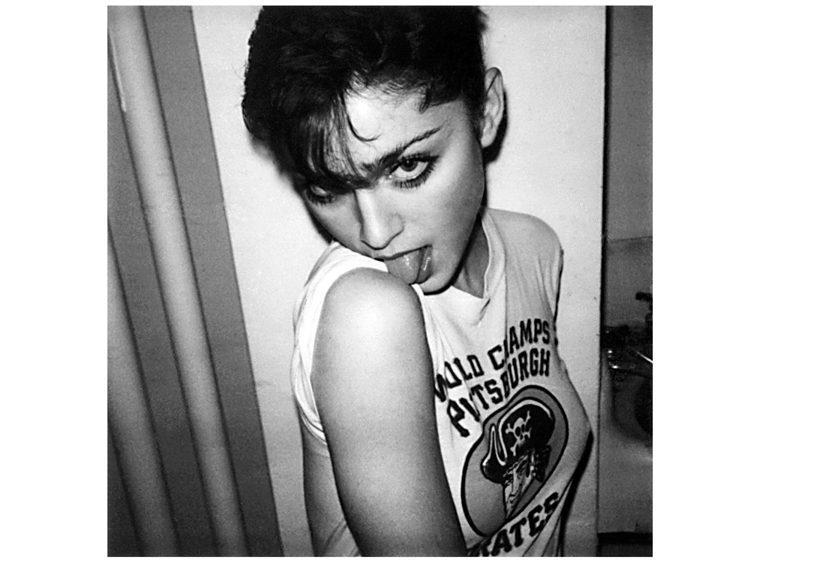
© Mick Rock 2021
MADONNA
“The Madonna shot was almost a snap. She was brought up to me to say hello [at a club] and as far as I knew at that time she was a dancer. This was when she was still raw — [in this image] she hasn’t even plucked her eyebrows. I think I took half a dozen shots. The thing that’s fucked up is that I can’t find the others. I know they’re packed away in a box somewhere but I’ve got to get them out. I saw them in my archive just before I moved – but that was 20 years ago. And someone like Madonna, well, it’s Madonna…”
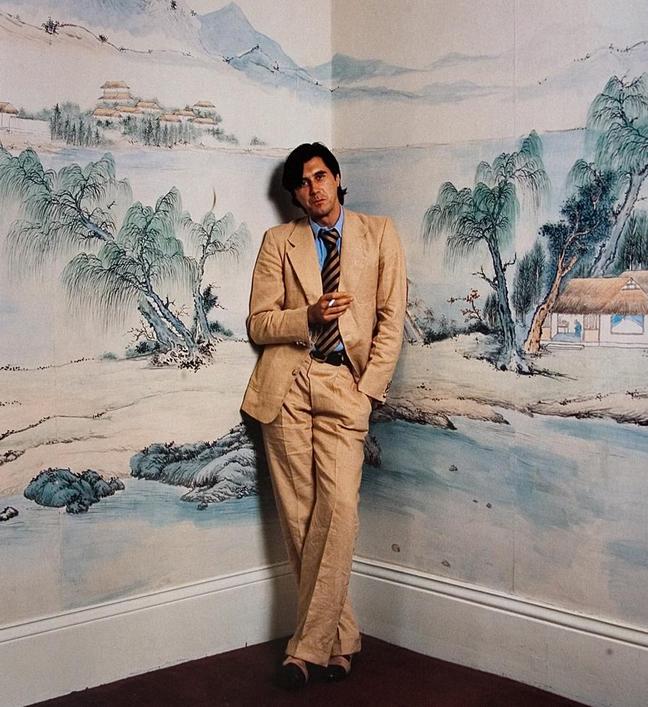
© Mick Rock 2021
BRYAN FERRY
“I like Bryan. He’s a cool character, though apparently by the late 70s he went somewhere elsewhere for a while and was in hospital once or twice. But look at him now — he’s got all his hair and is still going. Bryan and David [Bowie] were the two Englishmen from that period that made it in America. Bryan [and Roxy Music] could fill Madison Square Garden for a night, which is not nothing of course, but it wasn’t stadium-level.
“There was some crossover [in their styles] too, though Bryan developed his own distinct variation. He were still dressing up, but he wasn’t dressing up like some spaceman… That particular frame of Bryan was my favourite from the session — there’s something about the total focus he has, his whole body language. That’s not my direction. How could you direct that? Bryan was a master of projection, which made him very easy to work with. He was very open [to anything], which I think helped him develop all the things he tried.”

© Mick Rock 2021
ANDY WARHOL AND LOU REED
“Lou was at a bit of a loss when it came to a sense of humour. He was a unique character, a very ‘interesting’ man. And that’s all you’re going to fucking get. I tell no secrets. But ‘interesting’ depends on your mentality. This picture of him with Warhol was taken in ‘76 at 1 Fifth Avenue, a restaurant, to celebrate the launch of Lou’s album ‘Rock and Roll Heart’. Funnily enough, it was at the same place that I took some of the first pictures of Kiss without any make-up on, because they almost never went out without the make-up on.”
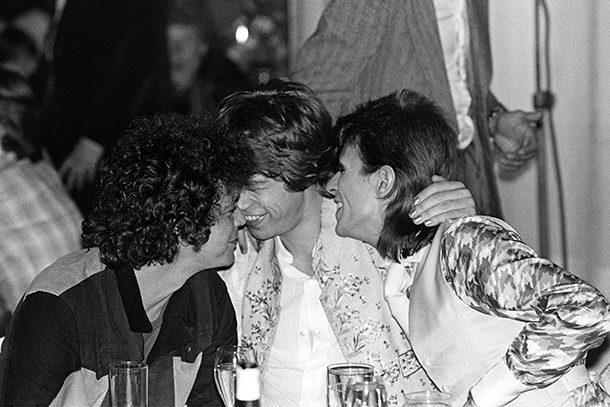
© Mick Rock 2021
LOU REED, MICK JAGGER AND DAVID BOWIE
“Oh yeah, that was some party – I just happened to be the only photographer there and was able to take this picture of the terrible trio. I don’t think that means it was luck that I was so often in the right place at the right time. I think these things are written somewhere. Just because you didn’t design these moments, you still have to put out the right energy. But yes I got lucky sometimes. Lou and Bowie were two sides of the same coin – Lou dark and moody, Bowie bright and communicative. Lou was super bright. He’d been to Syracuse, a good state university, so he was into more esoteric things, and he could discuss them with anybody. David in contrast was not so formally educated but he read anything he could get his hands on. He was constantly stimulated, constantly interested. So being around them, well, you got to know a lot.”
Want more insight? Read our interview with Marco Pierre White next…

Become a Gentleman’s Journal Member?
Like the Gentleman’s Journal? Why not join the Clubhouse, a special kind of private club where members receive offers and experiences from hand-picked, premium brands. You will also receive invites to exclusive events, the quarterly print magazine delivered directly to your door and your own membership card.


